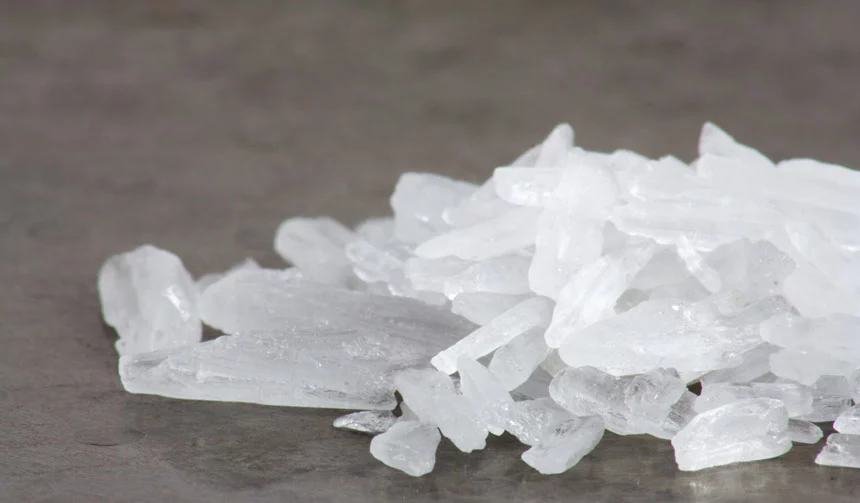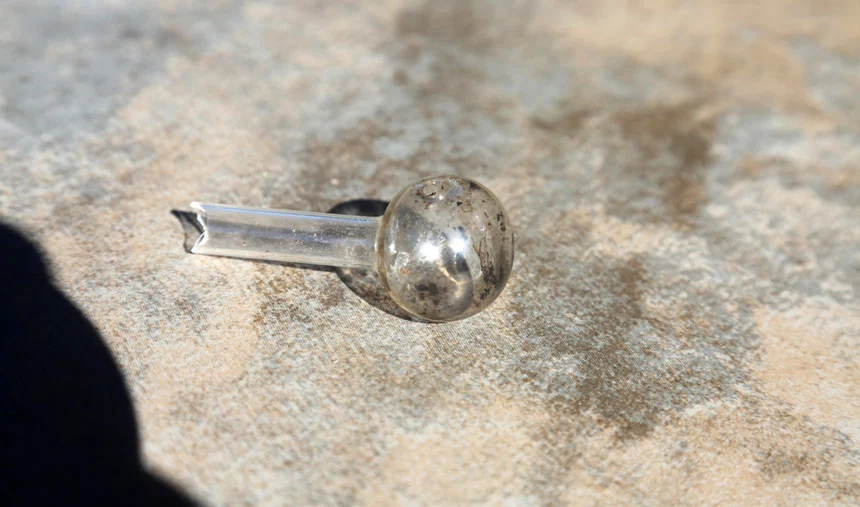What Does a Meth Pipe Look Like?
Table of Contents
- What Does a Meth Pipe Look Like?
- What is Meth?
- Why Do People Abuse Crystal Methamphetamine?
- What Do Meth Pipes Look Like?
- What are Meth Pipes Used For?
- Why Do People Smoke Meth?
- What are the Risks of Smoking Meth?
- Recognizing the Signs of Meth Abuse
- How is Meth Addiction Treated Effectively?
- Get Crystal Meth Treatment Options Now!
- FAQs on Meth Pipes and Meth Paraphernalia
Whether you have stumbled across what you believe to be drug paraphernalia in a loved one’s space, or you simply want to educate yourself on how to recognize the signs of methamphetamine addiction, it is important to know what a meth pipe looks like.
There are many common meth pipes, ranging in a wide variety of colors, shapes, and sizes. Typically though, this tool will resemble a glass pipe, which is used to smoke crystal meth.
Of course, there are many ways that you can recognize if a loved one may be abusing meth. Once you are equipped with the knowledge you need to recognize a loved one’s addictive habits, it is important to know how you can get them the help they need.
Keep reading to learn more about the signs of methamphetamine addiction, and how the Find Addiction Rehabs team can help you find treatment for yourself or your loved one today!
What is Meth?

Meth is a stimulant drug and falls under the Schedule II drug category as determined through the Controlled Substances Act. There is only one legal form of meth today, which is the prescription medication Desoxyn used to treat attention deficit hyperactivity disorder (ADHD).
When used illicitly, this drug is a highly addictive stimulant that can cause various health problems. People can use this drug through smoking, snorting, orally ingesting, or injecting meth, but the most common method of meth use is smoking this drug.
Why Do People Abuse Crystal Methamphetamine?
Before it can be understood how people abuse meth, it is important to first understand why they may be driven to it in the first place. For many meth users, their drug abuse stems from underlying mental health problems and difficult life situations.
Abusing drugs like meth can help provide temporary relief from the difficult thoughts, feelings, and realities that may otherwise make their lives more difficult. Unfortunately, because meth is such a habit-forming drug, an addiction to this substance can develop after just a few uses.
Once the user has become dependent, trying to stop their substance abuse can feel next to impossible. Without professional help, those struggling with meth addiction will have a hard time overcoming their drug use.
What Do Meth Pipes Look Like?

When abusing crystal methamphetamine, smoking this drug is often the preferred method of use. This is done by using a meth bong or pipe, which can have many different appearances.
In some cases, users will smoke meth out of homemade pipes which can be made from various common paraphernalia. This can include aluminum cans, light bulbs, a metal pipe, and other paraphernalia. Usually, though, this drug will be smoked using glass pipes, often with a bubble on the end, and typically referred to as a ‘pookie’ in slang terms.
Purchased meth pipes can be safer to use than a homemade pipe, and may last longer than those made from a light bulb or other household item. These can be purchased fairly easily online or through smoke shops, or even at gas stations in many places.
Some slang terms used to refer to these tools include oil burner, pizzo, piece, pooky, tweak pipe, bulb, or banger. Knowing how to recognize the different varieties of meth pipes and how they may be referred to can help prepare you to recognize the signs of addiction in a loved one.
What are Meth Pipes Used For?
Meth bongs or pipes are used to smoke methamphetamine and occasionally other drugs. When using a meth pipe, the drug is heated in a bowl attached to the stem of the pipe. Once it starts producing a vapor, the user inhales the smoke that comes through the stem.
Some people may abuse crack cocaine, another stimulant, with meth as a way of enhancing the euphoric properties of both drugs. This can be done using either a meth or crack pipe (sometimes referred to as an ice pipe) and will put the user at an increased risk of experiencing adverse health effects, including overdose.
‘Hot railing’ is another common method of meth use, which is similar to smoking, but the vapor is inhaled through a straw into the nose instead of the mouth. This can cause extensive damage to the nasal cavity and have a higher risk of overdose.
Why Do People Smoke Meth?

As the most common way that most people use meth, you may find yourself wondering why this method is preferred to others. The answer is simple. The reality of why most people prefer smoking meth to other methods is that it provides a much faster and more intense high.
Meth causes users to have increased energy and a euphoric high, and smoking and injecting this drug allows it to travel to the brain faster than other methods of abuse would. Injecting this drug is invasive and carries additional health risks, which is why people generally prefer smoking this drug.
Of course, this is not to say that smoking meth is somehow a “safe” method of consumption.
There is no risk-free way to use methamphetamine, or any other illicit drug for that matter. In fact, smoking meth can be extremely dangerous to the user.
What are the Risks of Smoking Meth?
There are several risks that come with smoking meth, both in the short term and with chronic abuse of this drug. Knowing the consequences of meth abuse can help those struggling with this substance get the help they need, and prevent others from experimenting with it.
Common short-term side effects of smoking meth include:
- High blood pressure
- Increased body temperature
- Restlessness
- Agitation and anxiety
For those who have been abusing meth for a long period of time, they may develop more severe side effects, including:
- Lung damage
- Poor nutrition
- Tooth decay (“meth mouth”)
- Mood swings
- Prolonged paranoia
- Brain damage
- Increased risk of stroke
- Liver and kidney damage
Recognizing the Signs of Meth Abuse

If you believe that a loved one is struggling with meth abuse, it is important to recognize more signs than just what a meth pipe looks like. Fortunately, there are several signs of drug abuse and addiction that you can look out for, including:
- Becoming more withdrawn and secretive from loved ones.
- Neglecting work, school, or home responsibilities.
- No longer caring for their personal hygiene.
- Burn marks, pipes, and other meth paraphernalia in their surroundings.
- Getting into financial or legal trouble.
- Developing mental health or medical conditions.
If you recognize these signs in a loved one, it is important to address this problem as soon as possible. Meth addiction can become life-threatening if it is allowed to progress. Seeking professional help is the best and most important thing you can do to help your loved one get back to a happy and healthy lifestyle.
How is Meth Addiction Treated Effectively?
There are several treatment options available to those who are struggling with meth addiction. What services will be best for them will vary depending on the severity of their substance abuse and whether they have any co-occurring issues that may complicate their treatment.
While there is no one-size-fits-all approach to the treatment process, your loved one will generally participate in recovery services such as:
- Medical Detox: When stopping meth use after a long time of abusing this drug, your loved one may experience uncomfortable withdrawal symptoms. Medical detox programs can help gradually wean them off of their drug use under constant medical supervision, and establish a solid foundation for long-term recovery.
- Inpatient Treatment: If your loved one has a more severe addiction, inpatient treatment can provide the safe and structured environment they will need to successfully overcome their addictive habits.
- Outpatient Treatment: If your loved one needs more flexible treatment, outpatient care can be a good choice. They will attend regular meetings with an addiction specialist and/or therapist, who can help them understand and work through their substance abuse habits.
- Therapy: Through participating in various therapeutic interventions, your loved one can address the underlying causes of their addiction and build healthier coping mechanisms and life skills for maintaining long-term recovery.
Knowing which level of care will be best for your loved one can be confusing and overwhelming. The Find Addiction Rehabs team can help you understand all of your treatment options, and which of these will be best for helping your loved one get their life back on track.
Get Crystal Meth Treatment Options Now!

If you or a loved one is struggling with a meth addiction, the Find Addiction Rehabs team is here to help. We work with an extensive network of treatment facilities nationwide and can help you find a rehab center that is right for you.
Our hotline is available 24/7 to provide you with answers to all of your treatment questions and connect you with recovery resources, anytime! Long-term sobriety is possible with the right support. Call now to start your recovery journey today!
FAQs on Meth Pipes and Meth Paraphernalia
How Can I Help Someone Who Doesn’t Want to Go to Rehab?
In some cases, a person may not yet be ready to get help for their meth addiction. Looking into harm reduction methods can help make sure that they are staying as safe as possible with their use, and help them feel better prepared to finally get sober.
It is important to remember that the end goal should be getting professional help to stop using meth completely.
Can Someone Be Forced to Go to Rehab?
If you believe that a loved one is abusing meth, it is only natural that you would want to immediately get them into treatment and on the road to recovery. However, it is not so simple as simply forcing them into rehab.
In some cases, you may be able to take the case to court and have them attend court-mandated treatment. Usually, though, it is best to approach your loved one with an intervention specialist and help them come to this decision on their own.
Having the support of their family and friends and the compassion of an addiction specialist can help give them the push they need to finally get the help they need.
Charles F. has been an active part of the Florida recovery community for over 5 years. He began as a behavioral health technician at an addiction treatment facility in Ocala, Florida and has since begun training as a Licensed Addiction and Chemical Dependency counselor in Boca Raton. Charles’ passion involves the promotion of recovery and helping spread the hope of recovery to as many readers as possible!


